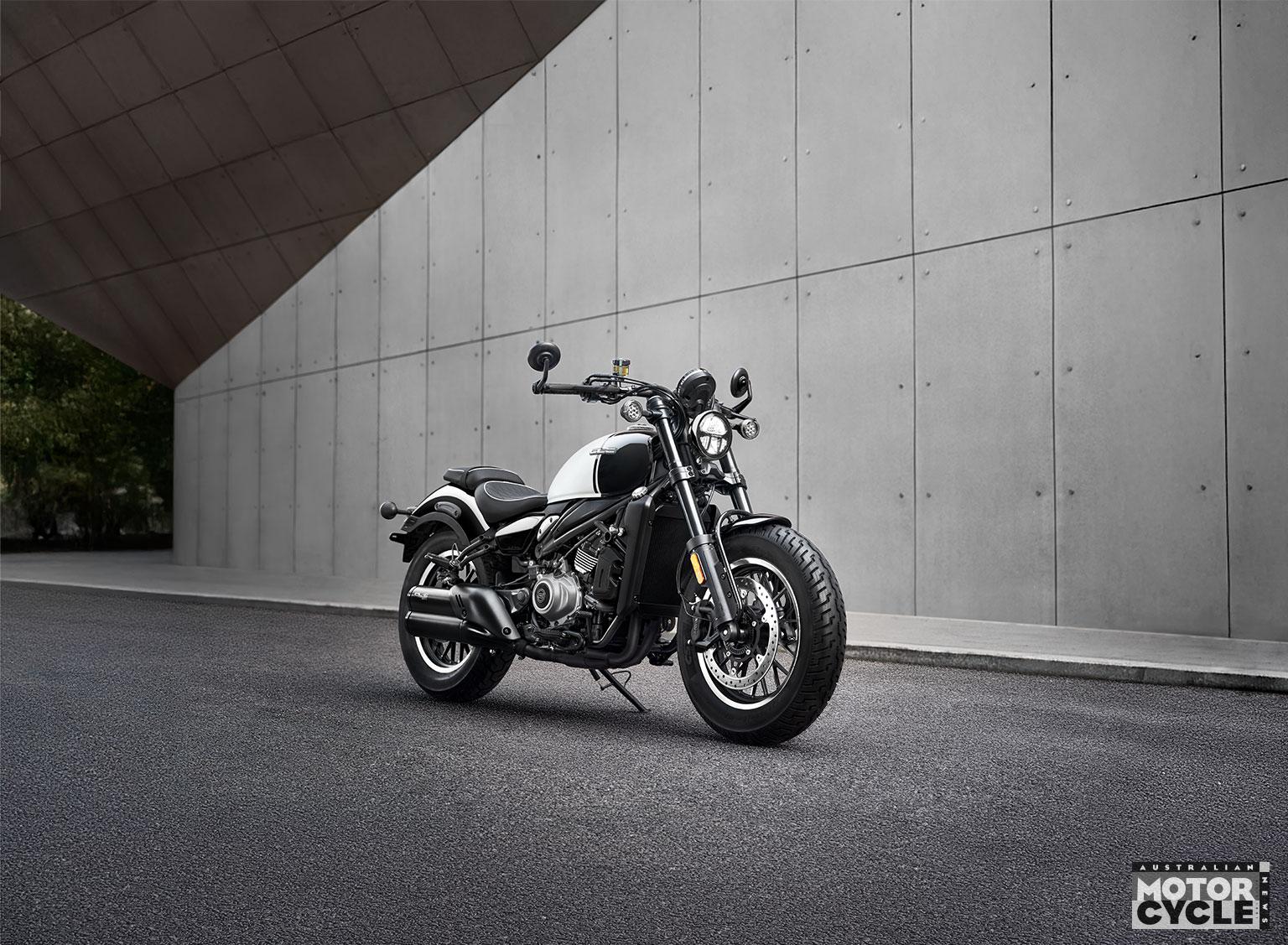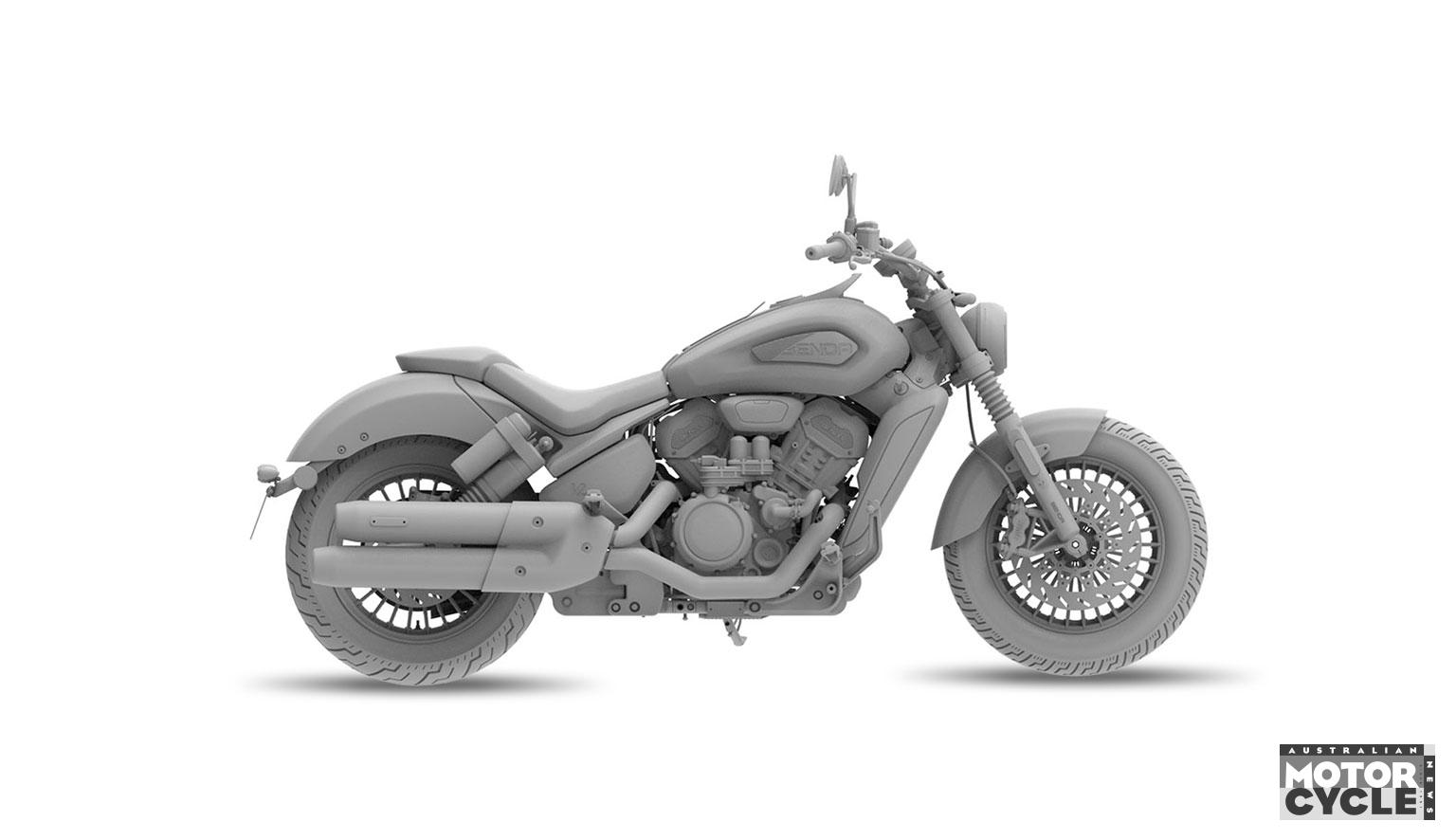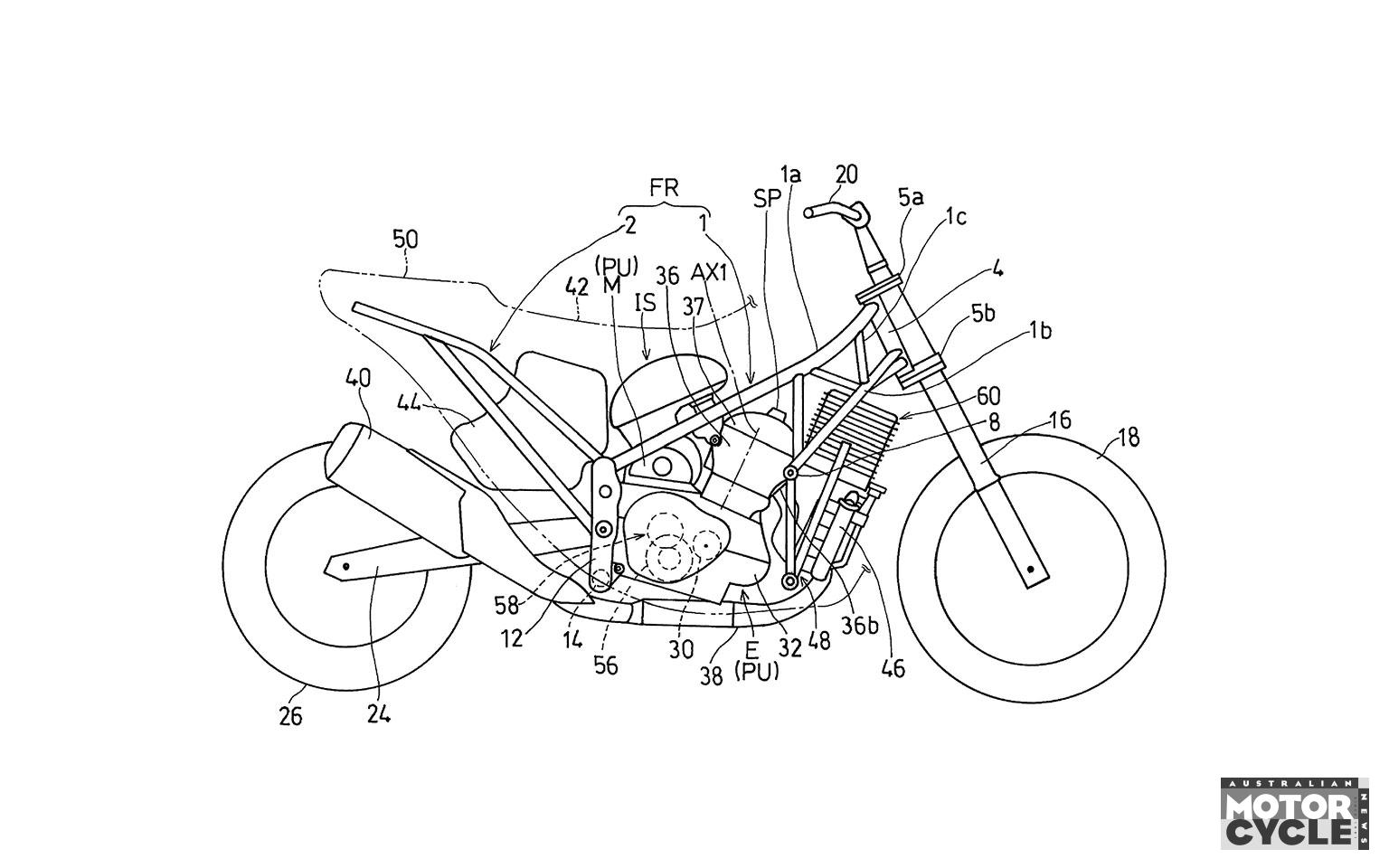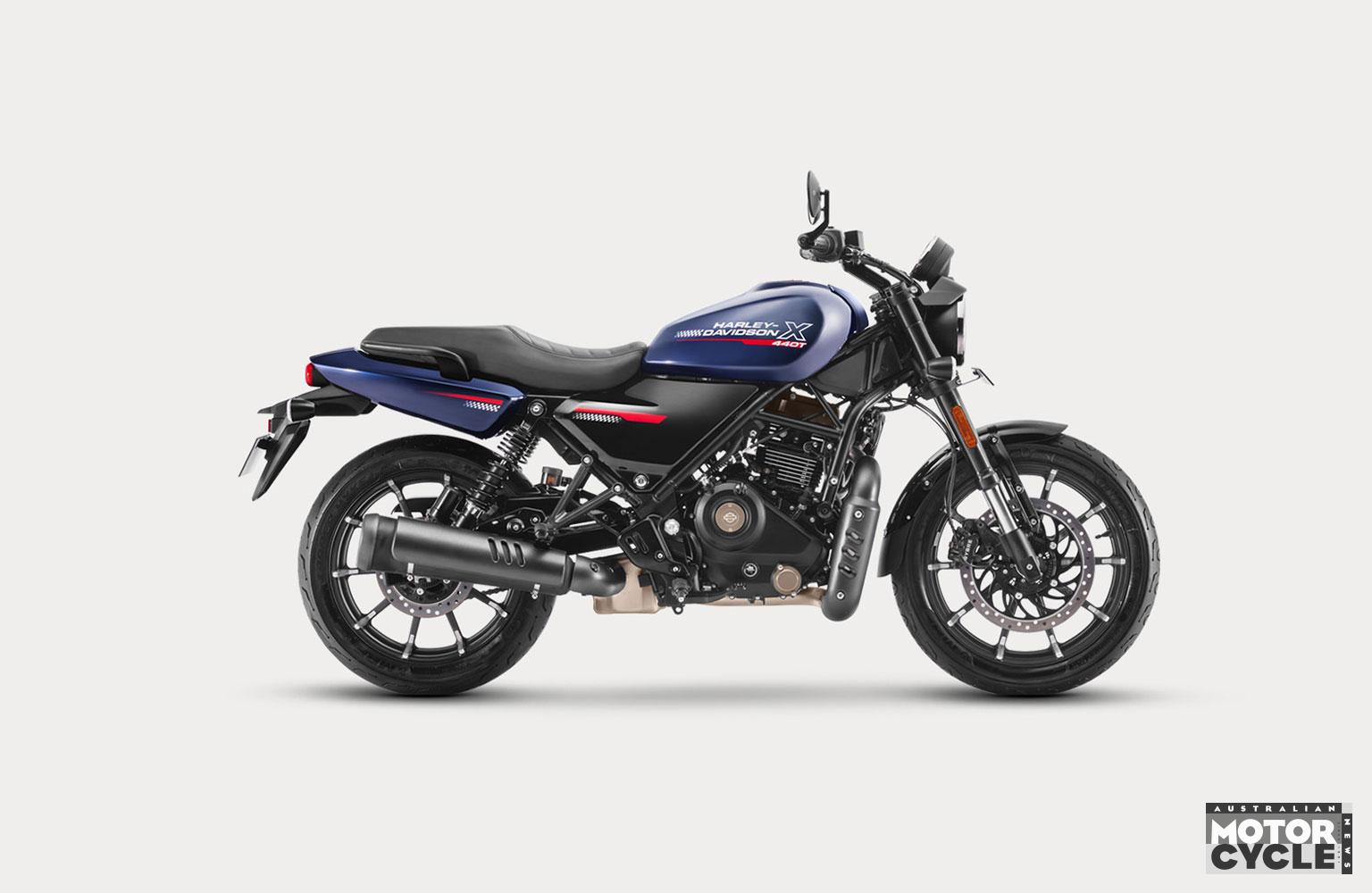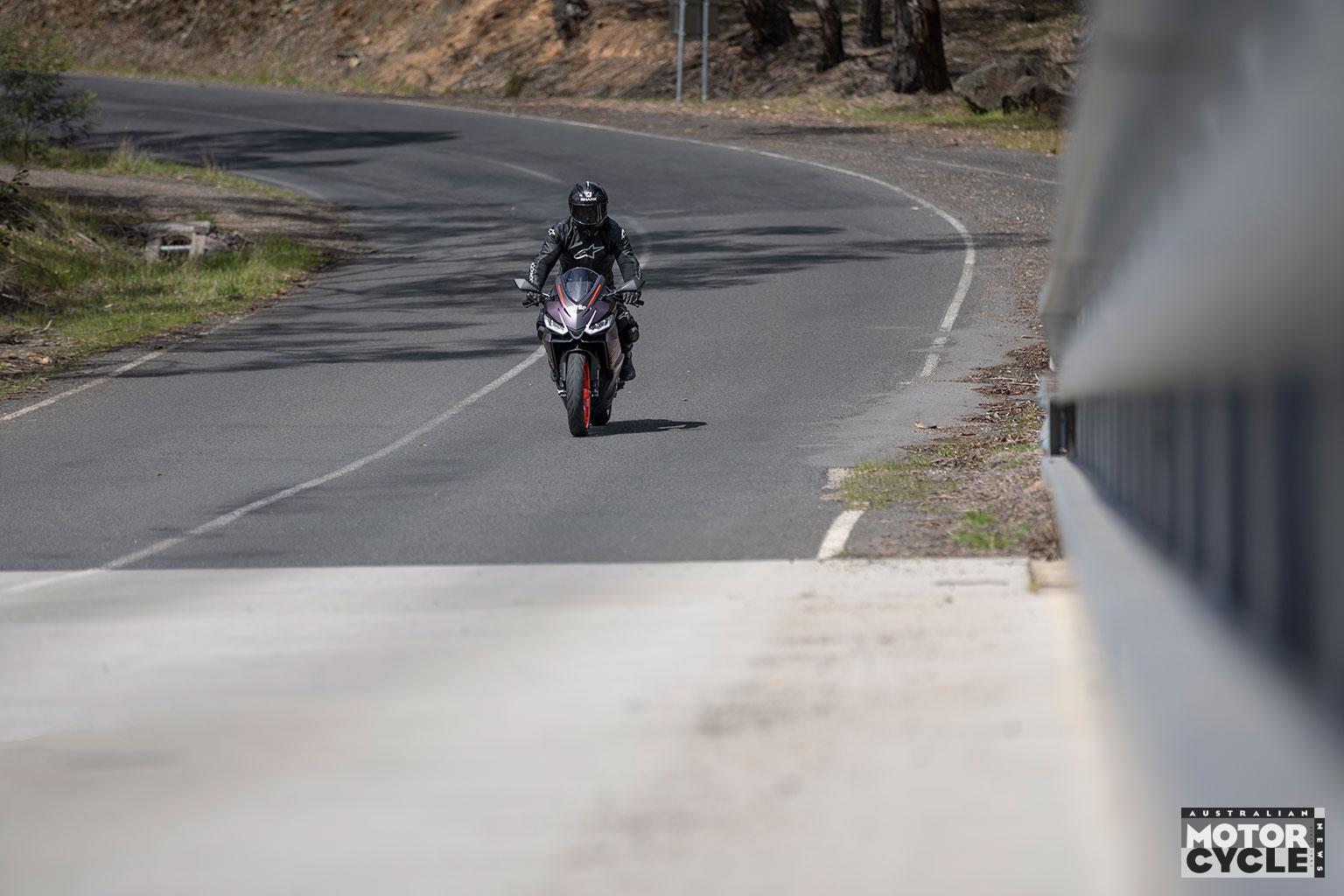The first, built by local Verona tuner Mr. Martini, is based on the new 399cc Sixty2 version of the Scrambler and makes a good fist of showing how well the little retro brushes up as a fully-faired race rep.
As with all the modded Scramblers on show, the modifications are cosmetic and intended to be easily replicated by real customers if they wanted to achieve something similar. That means the running gear and chassis are stock, as is the tank and even the headlight. The only additions are the new fairing, a single seat unit and a pair of clip-on bars, plus the Termignoni exhaust that’s already an option on the Scrambler.
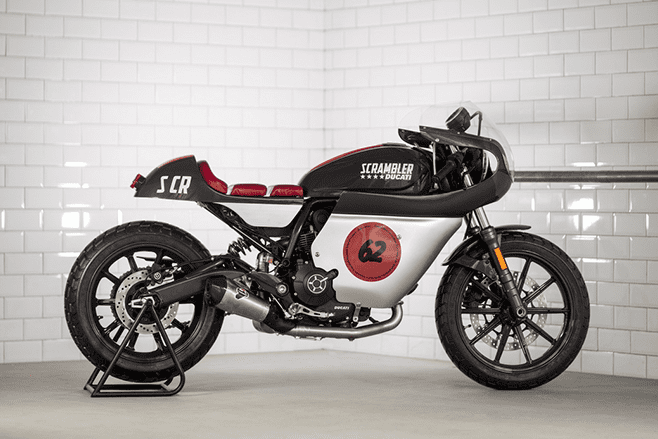
Peace Sixty2
The fairing is an interesting design. Instead of repositioning the headlight to the bodywork, it keeps the original lamp, still bolted to the bars, and just adds a Perspex panel in front of it, extending down from the screen. So theoretically by simply removing a handful of fasteners the bike could be turned back into a usable naked café racer.
We’re not so sure about its name, though; Peace Sixty2. It’s reflected in the use of the lyrics of John Lennon’s Imagine written around the edge of the race-style number on the side of the fairing.
Next up we have Artika, a bike built by Dario Lopez Studio. Inspired by the Pantah ice race bike that’s on display in the Ducati museum at the firm’s headquarters, it features the same yellow and blue paint and metal-finished engine. Unlike the other two machines on show, it’s based on the larger, 803cc Scrambler rather than the new Sixty2 model.

Artika
Overall it’s perhaps not quite such a template for customers to copy as the Peace Sixty2, since it goes without any lights and features studded tyres, which aren’t likely to be much use to the majority of Scrambler buyers.
And finally there’s a machine going by the name ‘Revolution’ that attempts to turn a Scrambler Sixty2 into a bobber, with questionable success. While ticking a lot of bobber boxes – there’s no front mudguard and the seat is as short as possible – it doesn’t really have the low-slung look that we associate with the term.

Revolution
Again, the modifications are hard to imagine many real customers following, particularly the use of a wide, 160-section front tyre. That particular trick is achieved by replacing the stock 18-inch front wheel with the rear wheel from another Scrambler, flipped 180 degrees; the holes where the sprocket would normally fit are clearly visible, filled with aluminium blanking plates.

